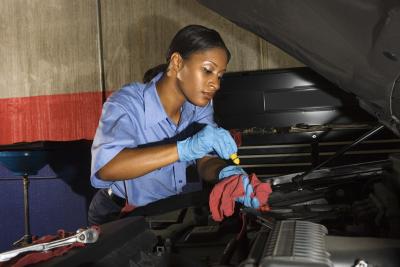
The fuel filter on the 2001 Ford Ranger is designed to filter out all of the trash and sediments from the gas tank before the fuel gets to the engine. The fuel pump sucks the fuel out of the gas tank and into the fuel line. The fuel line then carries the fuel to the "Inlet" port of the fuel filter. The fuel goes through the fuel filter, which filters the fuel before releasing the fuel through the "Outlet" port and into the engine. If the fuel filter is clogged, the engine will not run properly. If the filter is clogged too much, the engine will not crank at all.
Unscrew the gas cap completely from the gas tank to relieve the pressure on the fuel lines.
Locate the fuel filter under the driver's side. The fuel filter will be inside the rail in front of the gas tank.
Remove the fuel lines from the fuel filter by pushing the end of the fuel line disconnect tool into the front of the fuel line that is attached to the ports on the fuel filter. While pushing the tool into the fuel line to unlock the fuel line from the fuel filter, gently pull back on the fuel line to remove it from the fuel filter.
Set a small bucket under the fuel lines so that the excess fuel can run into the bucket.
Remove the clamp that holds the fuel filter inside the bracket with a ratchet and the proper size socket. Then remove the old fuel filter.
Put the new filter inside the bracket and bolt the clamp back over the fuel filter.
Put the fuel lines on the new fuel filter by pushing the lines on until you feel them lock in place. Then gently pull back on the fuel lines to make sure that they have locked onto the fuel filter ports. You will feel it when the fuel line locks in place.
Screw the gas cap back on the gas tank. The turn the ignition on and off three times to prime the fuel filter.
Start the pickup and inspect the fuel filter and the fuel lines for any leaks. If there are no leaks, you can turn the engine off. If you find leaks, fix them appropriately.